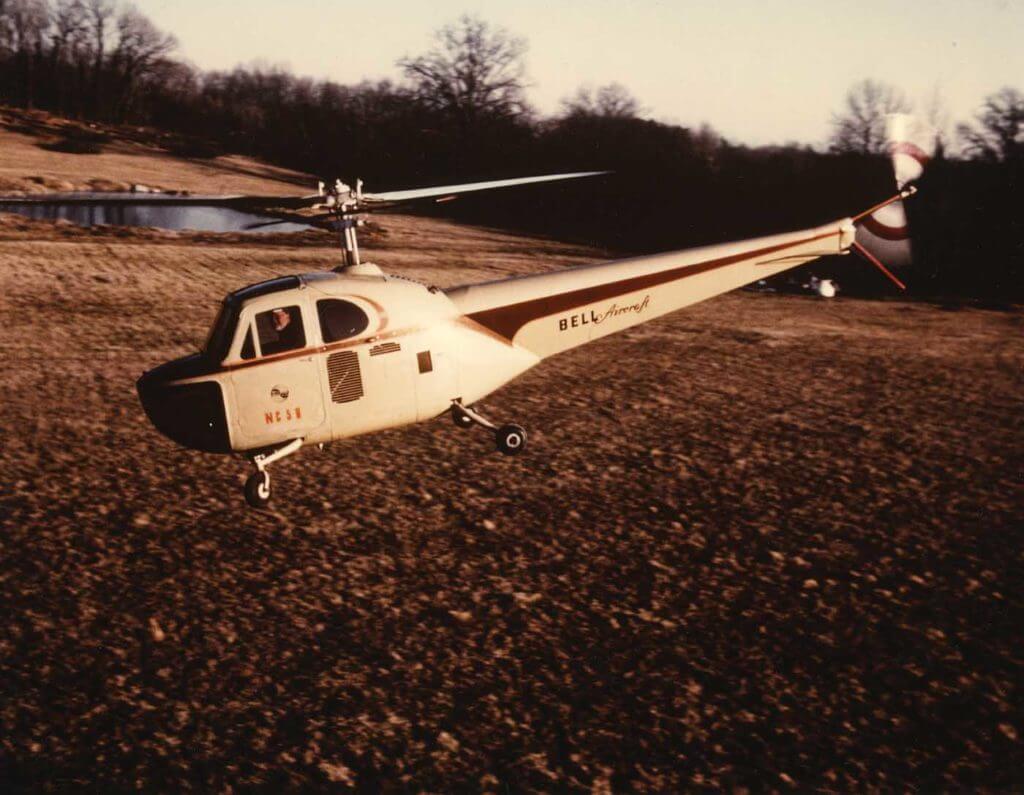Today, most operational helicopters are on skids, wheels, and (where needed) floats. But during the early days in the development of helicopters, the vast majority were constructed with a wheeled undercarriage. This was likely due to the thinking that helicopters would mainly operate from airports. The concept of using skids – and other forms of landing gear — was born out of innovation from pilots and mechanics in the field to adapt the aircraft to their operational environments.

Germany became the first country in the world to build experimental operational helicopters and put them into limited production during the Second World War. These were the Focke Wulf (later Focke Achgelis) Fa 223 with twin boom main rotors (preceded by the Fw 61), along with the Flettner Fl 265 and Fl 282 (with intermeshing rotors). All were designed with wheels. The Fw 61 was considered to be the first practical helicopter to be built in Germany.
Meanwhile, in the U.S., Igor Sikorsky designed and constructed his VS-300 — also on wheels — in 1939. It went through many changes before the engineers settled on the main and tail rotor configurations. The helicopter was later flown with an experimental float undercarriage. Sikorsky’s first production helicopter for the U.S. military was the three-wheeled R-4 helicopter, which was followed by the R-5 and R-6 during the war years. Bell Aircraft, Piasecki, Kaman, and Hiller all began producing helicopters after the war — and again, all of these had wheels.

Bell constructed 11 pre-production helicopters on wheels for experimental testing from 1945-46. They also tested several of the helicopters on floats for use on water and in wet swampy areas.
With the first civilian Bell 47B and agricultural 47B-3 and 47D helicopters entering service during 1947/1948, many pilots found that wheels were not the answer when landing on slopes and on soft wet areas. And they soon discovered that in high mountainous conditions, it was often difficult to locate level areas to land a wheeled helicopter.

“The front wheels of the Bell 47 would caster on you and often try to run you downhill if you didn’t have somebody to chock them with a rock,” said Carl Brady, an early pilot in the type, in an interview. “If you were by yourself you couldn’t do that, of course.”
In 1948, Herm Poulin’s Central Aircraft of Yakima, Washington, won a contract with the U.S. Geological Survey for two helicopters to be used in Alaska for a mapping project. The pilots for the mapping survey were Tommy Hall from Central Aircraft, and Brady, part owner of Economy Pest Control. Brady was trained on helicopters at Central and had worked for them training new helicopter pilots and in crop-dusting operations on agricultural fields. Brady’s helicopter was leased from Central Aircraft.

While on the job in Alaska, Brady soon found that that the terrain and wet tundra was not the best for landing an under-
powered Bell 47 on wheels. Sometimes one of the wheels would sink in the muskeg, while the others would not. Between Brady and his mechanic Joe Beebe, they came up with an innovative idea to attach an oak two-by-four piece of lumber, obtained from a sawmill in Pelican, Alaska, front to back on the wheels on each side of the helicopter. This greatly helped in landing the Bell 47 on soft ground. “It was illegal and not approved by the CAA [Civil Aeronautics Authority], but this type of landing gear sure relieved me,” said Brady.
Hall, the other pilot on project, and his mechanic Stan Hellwick used the same system on the other Central Bell 47B-3 helicopter.
Bell became aware of the rudimentary wood skids used on the project in Alaska on the Bell 47B helicopters, and its engineers were soon working on a solution to the problem with the wheels.

“Except for floats, wheels had always been the normal form of landing gear for operational helicopters,” wrote Owen Niehaus, an early U.S. Army Air Force helicopter pilot, and later Bell Aircraft test pilot, in a letter. “Under certain operational conditions, however, they were detrimental. In May of 1949, we began our first tests with skids on a production Bell 47B helicopter.”
A patent for skid landing gear was issued to Bell on June 9, 1953, following an initial application in September 1951.
Stewart Graham, a U.S. Coast Guard pilot at Floyd Bennet Field in Brooklyn, New York, did tests on a Sikorsky R-4 helicopter with skids at about the same time. However, they were never used operationally on the type, and Sikorsky helicopters are still using wheels on their rotorcraft to this day. Floats were tested on Sikorsky R-4, R-5 and R-6 helicopters by the U.S. Coast Guard during the late years of the war.

Credit has to be given to the helicopter pilots and their mechanics in being innovative in tackling problems and finding changes and solutions in the field to keep the early helicopters flying and producing revenue in the new industry.
In the present day, wheels, floats and skids continue to be used on both commercial and military helicopters, enabling aircraft to cope with whatever type of conditions they could meet in any environment around the world.






